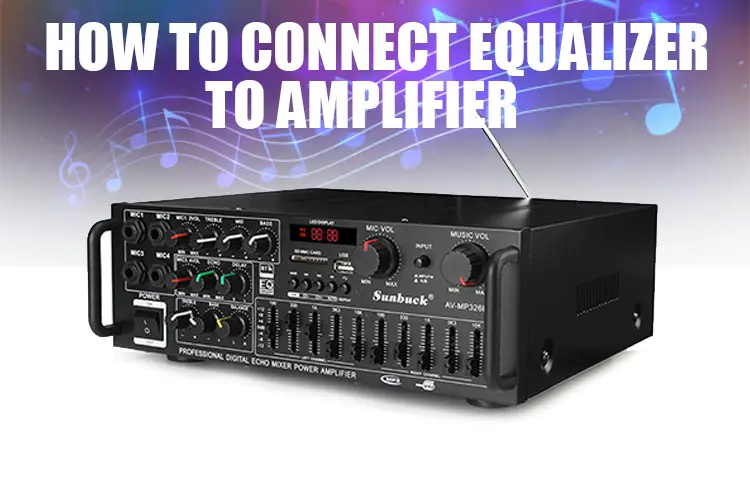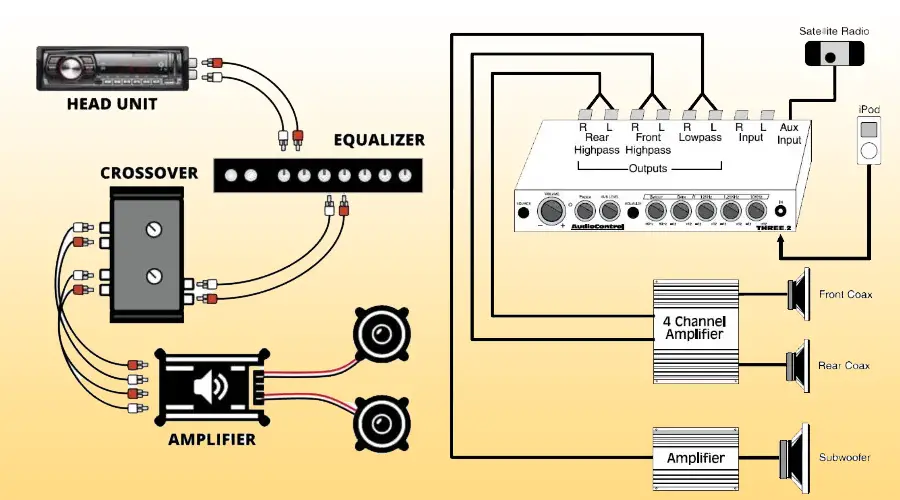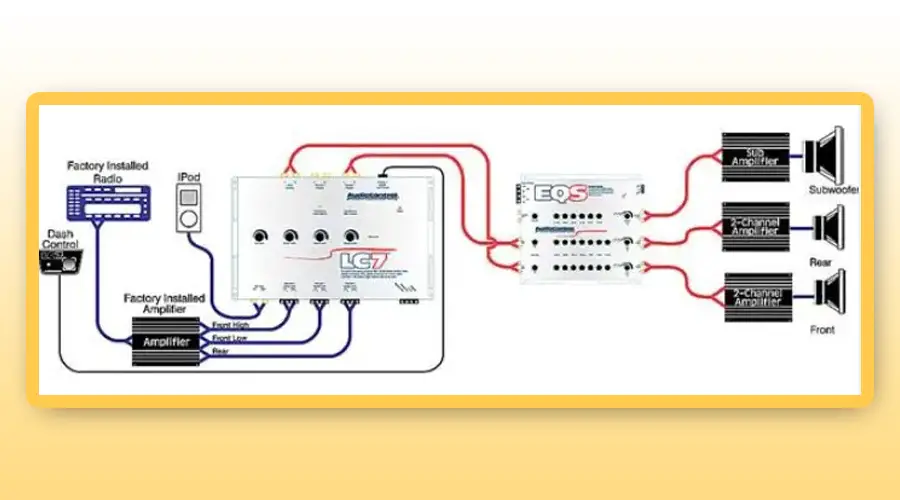Connecting an equalizer to your amplifier can be a bewildering experience for some – after all, not everyone’s born a tech geek. Choosing the right cable type, connecting the wires to correct outputs, adjusting the settings – there’s so much to do when it comes to connecting equalizers and amplifiers together. Not to mention, plenty of things could go wrong if you’re not careful enough.
Well, are we scaring you off? Apologies in that case. But don’t worry, if you’re looking for the easiest hassle-free ways to connect an equalizer with an amp, you’re at the right place! Come join us for an informative ride where we will unfold all the tips and tricks for a successful connection establishment.

Differences Between Equalizer and Amplifier
If you know what each device does and the different ways they operate, connecting them will get easier and you’ll be less likely to make any silly mistakes on the go.
What Does an Amplifier Do?
An amplifier is basically an electronic device that helps to boost up the power, voltage or current of a signal. Amplifiers are not only used in audio equipment of all kinds such as speakers, but are also used in wireless communications and broadcasting.
There are two major types of amplifiers: weak-signal and powered amplifiers.
Along with powering your speakers, amplifiers enable you to regulate the sound source and control the volume to your liking. In its simplest form, a stereo amplifier manages two channels – the left and the right, both of which make up the audio you hear.
What’s the Role of an Equalizer?
With the help of an equalizer, you can control the EQ settings of your songs and adjust the volume at a wide range of different frequency bands. Especially for DJs, having an equalizer decreases the masking effect so that each instrument can be heard more crisp and clear.
Therefore, connecting an equalizer to an amplifier is such a power combo for your home sound system. You get to enjoy full control over how you want to listen to your favorite songs and their audio quality.
How to Connect an Equalizer to an Amplifier
Let’s dive into the main step-by-step guide now. Just a heads up – only if your amplifier has preamp input and output channels for establishing direct connections, then you can follow this easy straightforward process.

Tools You’ll Need:
- 2 pairs of RCA Cables
We recommend using good-quality RCA cables as they can carry both analogue and digital audio sounds. We will need the cables to run the signal in a loop.
Step 1: Correctly Position The Amplifier and Equalizers
The amplifier and equalizer should be positioned in such a place that is stable and secure and also from where it can be easily monitored. If your modern amplifier has a remote control or is Wifi-compatible or supports Bluetooth and Alexa, then you should place the amplifier in proximity to you for convenient voice navigation.
Step 2: Measure The Distance.
After you have decided where to keep the amplifier and equalizer, now it’s time to measure the distance between your ceiling speakers and amplifier so that you can customize the cable size and length accordingly.
Step 3: Make sure the RCA cable length is adequate and not way too longer than the distance between the devices. If the distance was 10 ft. then you can get RCA cables of 12 ft.
Step 4: Grab one pair of the RCA cables. Connect one end of the metal connector to the preamp output of the amplifier and the preamp input of the equalizer. You’ll find these outputs located at the back of both devices.
Step 5: Moving on, now grab the other pair of the RCA cables to the output channels of the equalizer and the preamp input channels of the amplifier.
Step 6: If your amplifier model features tape monitor equalizer connectors, you can utilize those as well.
Step 7: Now power on both the amplifier and equalizer. Lastly, adjust the volume and and tweak the sound based on available EQ settings.

How to Connect Equalizer to Integrated Amplifier
Wondering what’s an integrated amplifier, you ask? It’s pretty much the same, just that it already comes with a preamp, power amp, and tone controls – all in one system. Integrated power amplifiers are becoming more and more popular day by day.
Here’s how you can connect it to an equalizer:
Step 1: For this method as well, you’ll need two sets of RCA cables again. Make sure they are of good quality and of adequate length.
Step 2: Connect one pair of cables to the preamp output connections of the integrated amplifier and the equalizer’s input connectors.
Step 3: Connect the other set of RCA wires to the output connectors of the equalization and the input connections of the integrated amp.
Step 4: Now that the essential loop for the devices has been built in order for them to communicate with one another, you can connect both devices to a power outlet and turn them on.
Step 5: Modify and improve the sounds by adjusting the equalizer. You can also try out different settings based on the size and layout of the room.
And voila! All done.
Wrapping Up
Now, was it all so difficult? The connecting procedure will be a breeze if you follow our instructions correctly. Nonetheless, if you’re facing sound quality issues after connecting the equalizer to your amplifier, don’t panic. Check if any of the RCA cable connections are loose or not. The cables need to be tightened well. Perhaps, the EQ settings were not adjusted properly, so you’ll need to look over that too.
Frequently Asked Questions:
Q.1: How to connect an equalizer to a receiver?
Answer: If your receiver has ‘processor output’ and ‘processor input’ jacks, you can easily link up an equalizer with the help of AUX or RCA cables.
Q.2: Do you need an equalizer with an amplifier?
Answer: If you can afford it, then we would totally recommend using an equalizer along with your amplifier as it’s a very powerful pair for achieving the best sound quality possible.
Q.3: What is an equalizer in an amplifier?
Answer: The equalizer basically ‘equalizes’ the audio signals, you can trim the sound frequency where it’s too strong or narrow it at peaks. Overall, an equalizer is the perfect device for adjusting sound frequencies.
Q.4: How do I connect my equalizer to my power supply?
Answer: You can use a fuse tap and plug in the equalizer to a source of switched 12V power.
